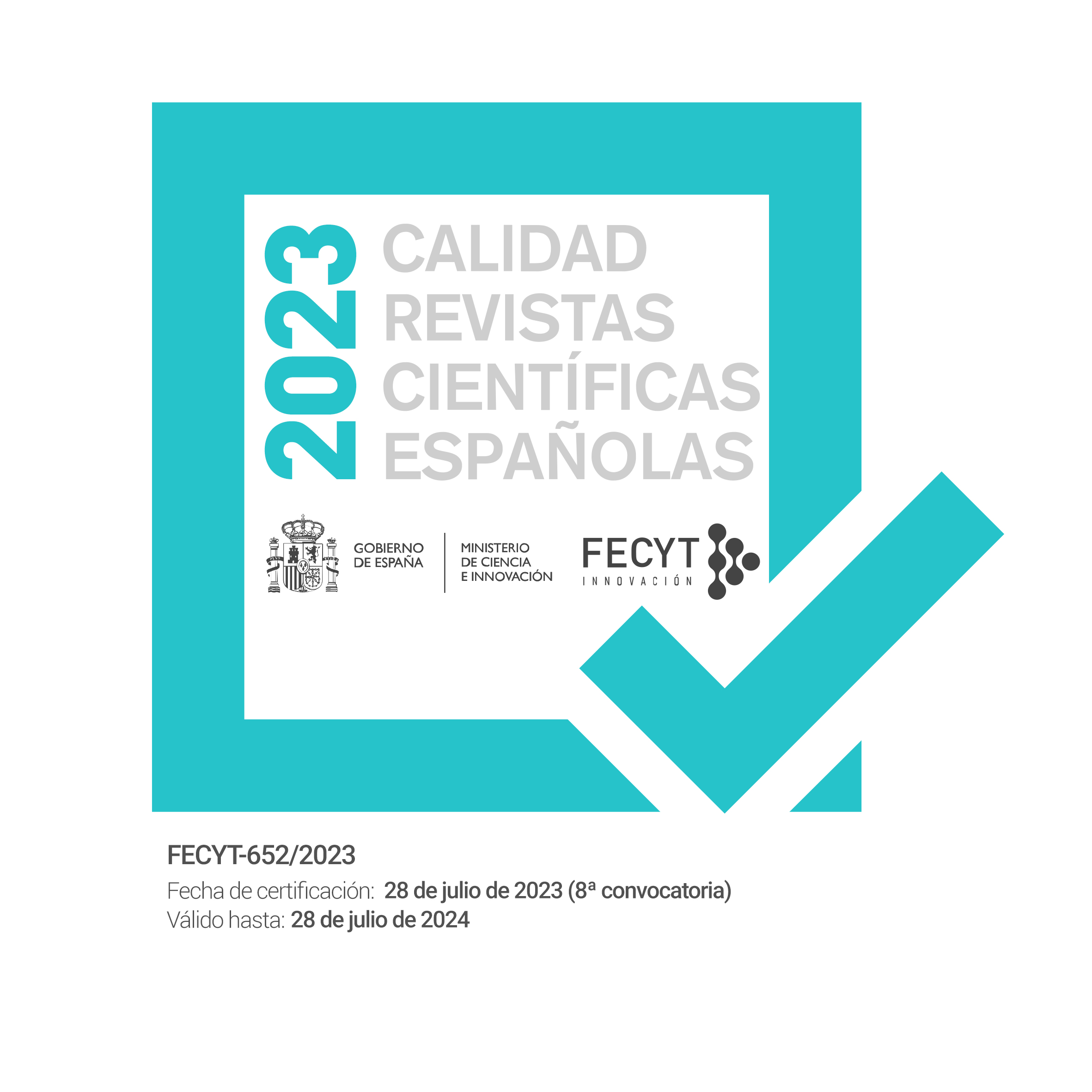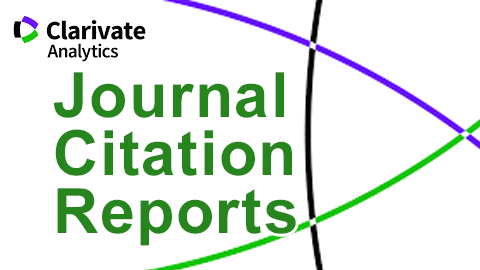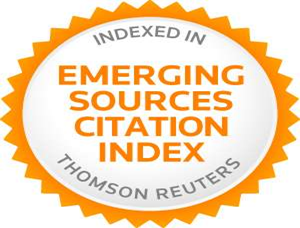Multilingual Influences and Comparative Periphrastic Adjectives in the Bibles of Wycliffe and King James
Resumen
Resumen
The present paper is a corpus-based study exploring the two grammatical resources (more/-er) available for comparative formation of adjectives in John Wycliffe’s Bible translation of 1385 and in the King James Bible of 1611. The first part of the analysis is devoted to the classification of the synthetic and analytic comparative adjectives according to the number of syllables to ascertain ratios of the periphrastic and inflected comparative adjectives employed in each Bible. Secondly, differences in comparative formation in a certain group of adjectives showing variation are examined contrastively in the translations of the Bibles of Wycliffe from the 4th c. Latin source – St. Jerome’s Bible (Vulgate), and of the King James from Tyndale’s (1525), Geneva’s (1560) and Bishop’s Bible (1568), which let us explore the comparative strategies used in the 14th and 17th century through translation and adaptation of Latin-based forms. This allows us to observe the development of this grammatical construction over the period when a sense of incipient linguistic codification began to spread, which would mark the beginning of standardisation in the English language.
Keywords: Middle English; language contact; adjective comparison; Latin influence; corpus linguistics
Resumen
Este artículo es un estudio de corpus que explora los dos recursos gramaticales (more/-er) para la formación de adjetivos comparativos en inglés en las traducciones de la Biblia de John Wycliffe (1385) y del Rey Jacobo (1611). La primera parte del análisis se centra en la clasificación de los adjetivos comparativos sintéticos y analíticos de acuerdo con el número de sílabas para determinar la proporción de adjetivos perifrásticos e inflexivos empleados en cada Biblia. En segundo lugar, se examinan diferencias en la formación del comparativo de un cierto grupo de adjetivos que muestra variación en la Biblia de Wycliffe, traducción inglesa de la Biblia de San Jerónimo del siglo IV (La Vulgata), y en la Biblia del Rey Jacobo, basada en las Biblias de Tyndale (1525), Ginebra (1560) y de los Obispos (1568), lo cual nos permite explorar la elección del tipo de comparativo usado durante el siglo XIV y XVII mediante la traducción y adaptación de los adjetivos comparativos que provienen del latín. Esto nos lleva a observar el desarrollo de esta construcción gramatical durante el periodo en el que una incipiente codificación lingüística empezó a expandirse y que marcaría el comienzo de la estandarización de la lengua inglesa.
Palabras clave: inglés medieval; contacto de lenguas; adjetivo comparativo; influencia del latín; lingüística de corpus
Citas
REFERENCES
Primary sources
King James Bible: The Holy Bible: Authorized King James Version. (1995). Grand Rapids, MI: Zondervan Bible Publishers.
Wycliffe’s Bible: Forshall, J. & Madden, G. (Eds.) (1879). The New Testament in English: According to the Version by John Wycliffe about A.D. 1380 and Revised by John Purvey about A.D. 1388. Oxford: Clarendon Press.
Secondary sources
Agresti, A. (1992). A survey of exact inference for contingency tables. Statistical Science, 7 (1), 131-177.
Aston, M. (1987). Wycliffe and the vernacular. Studies in Church History Subsidia, 5, 281-330.
Barber, C., Beal, J. C. & Shaw, P. A. (2009). The English Language: A Historical Introduction. Cambridge: Cambridge University Press.
Baugh, A. (1935). The chronology of French loan-words in English. Modern Languages Notes, 50 (2), 90-93.
Blake, N.F. (Ed.). (1992). The Cambridge History of the English Language, vol. II (1066-1476). Cambridge: Cambridge University Press.
Bolinger, D. (1968). Aspects of Language. New York: Harcourt.
Breban, T. (2010). English Adjectives of Comparison: Lexical and Grammaticalized Uses. Berlin/New York: Mouton De Gruyter.
Cantos Gómez, P. (2013). Statistical Methods in Language and Linguistic Research. Equinox Publishing Ltd.
Croft, W. (2001). Radical Construction Grammar. Syntactic Theory in Typological Perspective. Oxford: Oxford University Press.
Crystal, D. (2010). Begat. The King James Bible and The English Language. New York: Oxford University Press.
Danchev, A. (1989). Language change typology and adjectival comparison in contact situations. Folia Linguistics Historica 9, 161-174.
Fries, U. (1993). The comparison of monosyllabic adjectives. In A. H. Jucker (Ed.), The Noun Phrase in English: Its Structure and Variability (pp. 25-44). Heidelberg: Universitätsverlag Winter.
González-Díaz, V. (2006). The origin of English periphrastic comparison. English Studies 84, 707-734.
González-Díaz, V. (2008). English Adjective Comparison. A Historical Perspective. Amsterdan: John Benjamins.
Görlach, M. (1978). Einfuhrung ins Frühneuenglische. Heidelberg: Quelle & Meyer.
Haugen, E. I. (Ed.). (1972). The Ecology of Language. Anwar, S. Dil. California: Stanford University Press.
Heine, B. & Kuteva, T. (2005). Language Contact and Grammatical Change. Cambridge. Cambridge University Press.
Hernández-Campoy. J. M. & Schilling, N. (2012). The application of the quantitative paradigm to historical sociolinguistics: Problems with the generalisability principle. In J. M. Hernández-Campoy & J. C. Conde-Silvestre (Eds.), The Handbook of Historical Sociolinguistics (pp. 65-81). Oxford: Blackwell.
Hickey, R. (2012). Internally- and externally- motivated language change. In J. M. Hernández- Campoy and J. C. Conde-Silvestre (Eds.), The Handbook of Historical Sociolinguistics (pp. 65-81). Oxford: Blackwell.
Hilpert, M. (2008). The English comparative-language structure and language use. English Language and Linguistics, 12 (3), 395-417.
Hogg, R. M. (Ed.). (1992). The Cambridge History of the English Language. Volume I. The Beginning to 1066. Cambridge: Cambridge University Press.
Jespersen, O. (1956). A Modern English Grammar on Historical Principles, VII. Copenhagen: Ejnar Munskgaard.
Jones, M. C. & Esch, E. (Eds.). (2002). Language Change: The Interplay of Internal, External and Extra-linguistic Factors. Berlin: Mouton de Gruyter.
Kytö, M. (1996). The best and most excellentest way: The rivalling forms of adjective comparison in late middle and early modern English. In J. Svartvik (Ed.), Words. Proceedings of an International Symposium, Lund, 25–26 August 1995 (pp.124-144). Stockholm: Kungl. Vitterhets Historie och Antikvitets Akademien.
Kytö, M. & Romaine, S. (1997). Competing forms of adjective comparison in Modern English: what could be more quicker and easier and more effective? In T. Nevalainen & L. Kahlas-Tarkka (Eds.), To Explain the Present: Studies in the Changing English Language in Honour of Matti Rissanen (pp. 329–352). Helsinki: Société Néophilologique,
Kytö, M. & Romaine, S. (2000). Adjective comparison and standardisation processes in American and British English from 1620 to the present. In L. Wright (Ed.), The Development of Standard English 1300–1800. Theories, Descriptions, Conflicts (pp. 171–194). Cambridge: Cambridge University Press.
Kytö, M., Rydén, M. & Smitterberg, E. (Eds.) (2006). Nineteenth-Century English: Stability and Change. Cambridge: Cambridge University Press.
Lampe, G. W. H. (Ed.), (1969). The Cambridge History of the Bible. Vol. II. Cambridge: Cambridge University Press.
Lass, R. (Ed.). (1999). The Cambridge History of the English Language. Volume III. 1476-1776. Cambridge: Cambridge University Press.
Leech, G. & Culpeper, J. (1997). The comparison of adjectives in recent British English. In T. Nevalainen & L. Kahlas-Tarkka (Eds.), To Explain the Present: Studies in the Changing English Language in Honour of Matti Rissanen (pp. 353–373). Helsinki: Société Néophilologique.
Lindquist, H. (1998). The comparison of English disyllabic adjectives in –y and -ly in Present-day British and American English. In H. Lindquist, S. Klintborg, M. Levin & M. Estling (Eds.), The Major Varieties of English. Papers from MAVEN 97 (pp. 205-12). Växiö: Acta Wexionensia.
Lindquist, H. (2000). Livelier or more lively? Syntactic and contextual factors influencing the comparison of disyllabic adjectives. In J. M. Kirk (Ed.), Corpora Galore: Analysis and Techniques in Describing English (pp. 125–132). Amsterdam: Rodopi. London/New York: Routledge (2nd Edition).
Machan, T. W. (2003). English in the Middle Ages. London: Oxford University Press.
McArthur, T. (1992). The Oxford Companion to the English Language. New York: Oxford University Press.
McGrath, A. (2001). In the Beginning: The Story of the King James Bible. New York: Doubleday.
Mitchell, B. (1985). Old English Syntax. Vol. I. Oxford: Clarendon Press.
Mondorf, B. (2000). Wider-ranging vs. more old-fashioned views on comparative formation in adjectival compounds and derivatives. In B. Reitz, S. Rieuwertz, D Kastovsky, M. Steppat, D. Riemenschneider & M. Fludernik (Eds.), Proceedings of the Anglistentag 1999 (pp. 35–44). Trier: Wissenschaftlicher Verlag Trier.
Mondorf, B. (2002). The effect of prepositional complements on the choice of synthetic or analytic comparatives. In H. Cuyckens & G. Radden (Eds.), Perspectives on Prepositions (pp.65-78). Tübinger: Niemeyer.
Mondorf, B. (2003). Support for More-support. In G. Rohdenburg & B. Mondorf (Eds.), Determinants of Grammatical Variation in English (pp. 251-304). Berlin & New York: Mouton de Gruyter.
Mondorf, B. (2007). Recalcitrant problems of comparative alternation and new insights emerging from Internet data. In M. Hundt, N. Nesselhauf & C. Biewer (Eds.), Corpus Linguistics and the Web (pp. 211-232). Amsterdam: Rodopi.
Mondorf, B. (2009). More Support for More-Support. The role of Processing Constraints on the Choice Between Synthetic and Analytic Comparative Forms. Amsterdam: John Benjamins.
Mustanoja, T. F. (1960). A Middle English Syntax. Helsinki: Societé Néophilologique.
Pound, L. (1901). The Comparison of Adjectives in English in the XV and the XVI Century. Heidelberg: Carl Winter.
Quirk, R. & Wrenn, C. L. (1955). An Old English Grammar. London: Methuen.
Quirk, R., Greenbaum, S., Leech, G. & Svartvik, J. (1985). A Comprehensive Grammar of the English Language. London: Longman.
Selinker, L. (1972). Interlanguage. International Review of Applied Linguistics (IRAL), 10: 209-230.
Suematsu, N. (2004). The comparison of adjectives in 18th-century English. NOWELE, 45, 33–50.
Sweet, H. (1891). A New English Grammar: Logical and Historical. Oxford: Clarendon.
Terasawa, J. (2003). A sociohistorical study of periphrastic comparison in English. In M. Ukaji, M. Ike-Uchi & Y. Nisimura (Eds.), Current Issues in English Linguistics (Special Publications of the English Linguistic Society of Japan) (pp. 191-207). Tokyo: The English Linguistic Society of Japan.
Wright, E. M. (1913). Rustic Speech and Folk-lore. London: Oxford University Press.
Descargas
Publicado
Número
Sección
Licencia
Reconocimiento – No comercial (CC BY-NC). Bajo esta licencia el usuario puede copiar, distribuir y exhibir públicamente la obra y puede crear obras derivadas siempre y cuando estas nuevas creaciones reconozcan la autoría de la obra original y no sean utilizadas de manera comercial.
Los autores retienen todos sus derechos de publicación y copyright sin restricciones.









